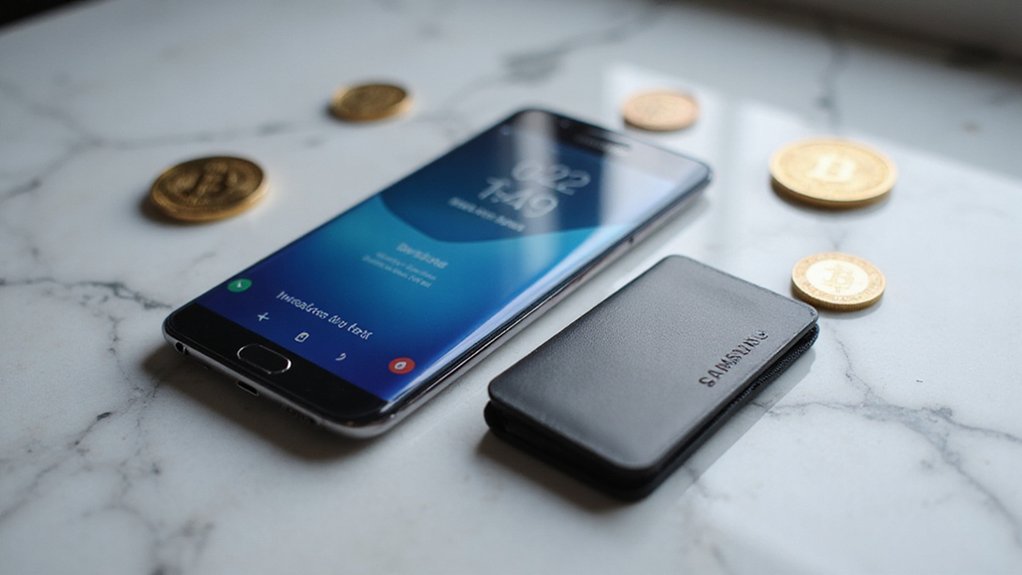In what can only be described as another milestone in the relentless march toward making cryptocurrency purchases as mundane as buying coffee, Samsung Pay has integrated directly within Coinbase’s mobile application, enabling select users across the United States and Canada to acquire Bitcoin, Ethereum, and Dogecoin through the familiar tap-to-pay interface that has become synonymous with modern consumer convenience.
The integration eliminates the tedious ritual of manually entering payment credentials—a process that has somehow persisted in digital finance despite decades of technological advancement. Users can now leverage Samsung Pay’s established mobile payment infrastructure to fund their Coinbase accounts, combining the security protocols of both platforms in what amounts to a fortress-like approach to protecting one’s digital asset acquisitions.
This development represents more than mere technological convergence; it signals Coinbase’s strategic positioning amid an increasingly competitive landscape where regulatory uncertainties have hobbled several rival exchanges. By expanding payment options to include Samsung Pay alongside existing methods (bank transfers, credit cards, PayPal, Apple Pay, and Google Pay), Coinbase effectively casts a wider net for users who might otherwise hesitate to navigate the traditional friction points of cryptocurrency acquisition. The move positions Coinbase as one of the first U.S. exchanges to leverage Samsung Pay’s mobile wallet infrastructure for crypto transactions.
Coinbase strategically expands payment gateways to capture hesitant users while competitors struggle with regulatory headwinds.
The gradual rollout—initially limited to select users with broader availability promised imminently—follows the tech industry’s standard playbook of controlled expansion to guarantee system scalability. This measured approach acknowledges the reality that even the most sophisticated payment infrastructures can buckle under unexpected demand, particularly when handling the volatility-prone world of digital assets. Understanding proper private key management remains essential for users regardless of how they fund their accounts, as these mathematical credentials ultimately control access to their digital holdings.
Perhaps most intriguingly, this partnership reflects the broader industry trend toward normalizing cryptocurrency through familiar interfaces. By embedding crypto purchases within established mobile payment ecosystems, companies are fundamentally conducting a stealth campaign to mainstream digital assets—transforming what was once the domain of tech-savvy early adopters into something approaching routine financial behavior. The collaboration comes on the heels of Coinbase’s launch of the Base App, which consolidates trading, messaging, and payments into a comprehensive crypto management platform.
The implications extend beyond mere convenience. This integration may catalyze similar partnerships between mobile wallet providers and cryptocurrency exchanges, potentially accelerating the pace at which digital assets become integrated into everyday commerce.
Whether this represents genuine financial evolution or simply another layer of complexity in an already convoluted payments landscape remains to be seen.









